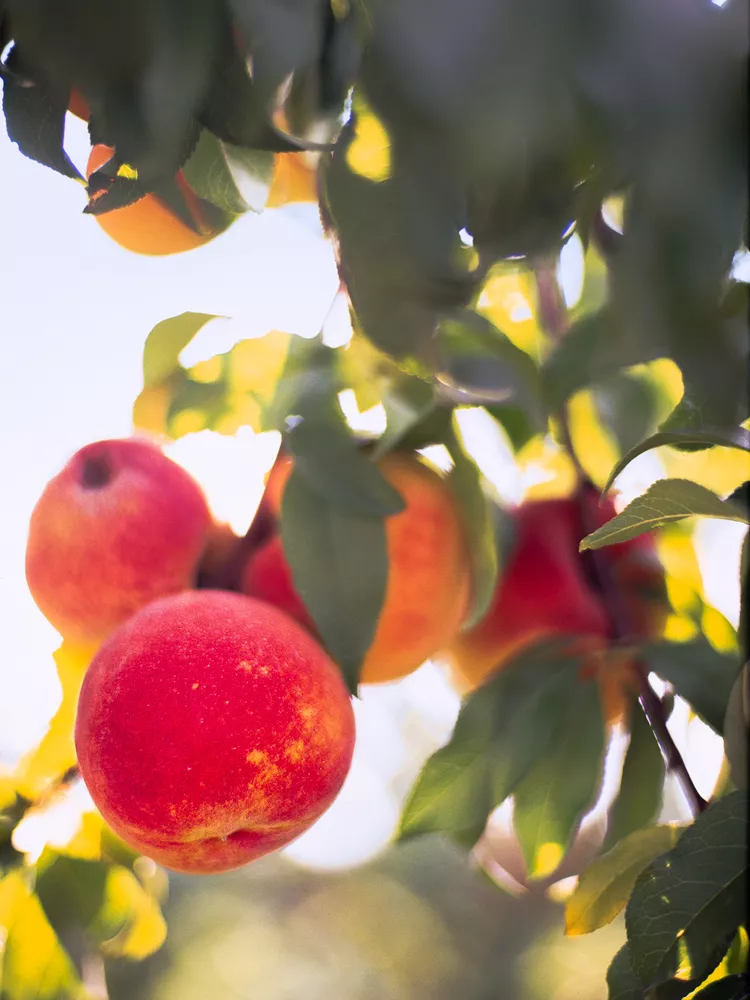Learning how to grow a peach tree from seed is not only possible, it's a great way to get kids (and those of us who are young at heart) excited about what we are eating. Seeing any edible plant such as peas, beans, and corn grow from a seed into a plant is a fascinating project to connect with where our food comes from. With peaches, the process is a bit longer than a quick-growing bean plant, but it still can be a worthwhile experience. Here's how to grow your own peach tree from seed.
Grafted vs. Seed-Grown Peaches
Commercially, peaches are grown on grafted trees, so the tree vigor, fruit quality, and flavor of your seed-grown peach may be extremely different than the peach it came from. Growing fresh peaches from seed is for patient gardeners because it'll take several years to get any fruit and it may or may not be successful.
Steps for Growing a Peach Tree from Seed
After enjoying a ripe, juicy peach, you're left with a large pit. Here's what to do if you'd like to try growing it into a tree.
Step 1. Dry out the peach pit.
Remove any remaining fruit from the pit. Give the pit a good rinse in the sink and then place it in a dry area with good air flow like a window sill. Allow the pit to dry for three to four days. It must be completely dry to crack it open with ease.
Step 2. Remove the seed from the pit.
Once the pit is all dry, it's time to remove the seed inside it. Use a nut cracker or a pair of pliers to break open the hard pit. Don't apply too much force on the pit because you want to avoid damaging the tender seed. It's very similar to removing an almond from its shell, which needs to be done with a little care. Once cracked, remove the outer, hard coating to reveal the peach seed. The seed is white and looks very similar to an almond.
Step 3. Soak the seed in water.
Fill a plastic storage bag with an inch of room temperature water. Add the peach seed and close the bag tightly. Allow the seed to soak for 2 to 3 hours. Once the soaking process is over, add about a cup of fresh potting mix to the bag until the consistency of the soil is damp, but not soggy.
Step 4. Chill out.
Place the bag filled with soil, water, and your peach seed in the refrigerator at a temperature between 34 to 42°F. Place it away from any other fruits or vegetables. Leave the bag in the refrigerator for 5 to 6 weeks, checking it daily to see if germination or sprouting of the seed has occurred. Once the seed has some growth emerging, it's time to plant it in a pot.
Step 5. Pot your peach seedling.
Plant your seedling in a mix of half potting soil and half compost in a ceramic or plastic container. This will allow you to closely monitor water and nutrients, compared to planting it directly in the ground. Plant the seed about 6 inches below the top of the container. Place your container in part sun and slowly transition it to a full sun location as it grows a few leaves. Continue to water and watch its growth on a daily basis.
When to Plant a Peach Seedling Outside
Planting a peach seedling out in your garden may be done during the warmer months. If you started your seed indoors during the colder months, transplant outdoors into the garden after the last spring frost has passed and soil has warmed up.
The best time to plant a peach tree from seed is in the autumn to early winter (September to November) depending on your location. This is when the worst heat of the summer has passed, but there's still enough time for the young peach tree to become established before snowfall.
How to Plant a Peach Tree Seedling
The peach was likely first cultivated in China, but it's native to Persia (modern-day Iran). Peaches are part of the same genus (Prunus) as apricots, cherries, almonds, and plums. Fresh peaches can be grown outdoors in USDA Hardiness Zones 4-10, but do best in Zones 6-8.
When planting your peach tree in the garden, select a location that is warm and sunny. The garden soil should be well-drained, but moist. Add plenty of organic matter or compost to the soil when planting seeds. Make sure the soil hits at the base of the tree trunk and doesn't go up the trunk. This can cause rot if done with soil or mulch, creating too much moisture around the base of the trunk.
Care Tips for Your New Peach Tree
Newly planted peach trees should be staked to keep them upright until they have grown enough of a root system to anchor themselves securely in the ground. Mulch in the spring with a layer of well-aged manure or compost about an inch thick. If frost is in the forecast and trees are in bloom, cover with fleece or plastic. Water during dry periods.
Typically in the first year of growth, the plant is focusing its energy on growing roots, stems, and leaves. Once the tree is well established, it will start flowering. Peaches are self-fertile, which means they can pollinate themselves with help from bees, but hand-pollination can increase fruit set. To do so, touch a soft paintbrush from flower to flower, simulating what a bee would do.
Pruning is only necessary to remove dead or damaged stems. Removing old, dead stems helps to promote new, vigorous growth. Pruning should never take place in the winter as the risk of silver leaf disease or cankers is too high. Prune peach trees in early spring before new growth appears or late summer/autumn immediately following harvest.




















